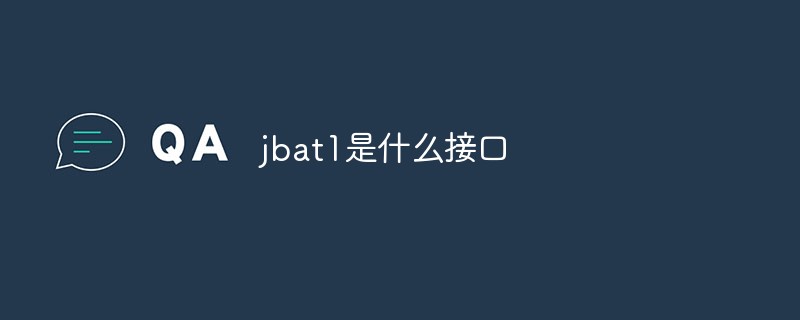
Java Interfaces and abstract classes are important concepts in Java programming. They provide programmers with more flexible design patterns and code reuse mechanisms. Interfaces and abstract classes play an irreplaceable role in Java, and a deep understanding of them will help developers better deal with various programming challenges. This article will deeply explore the characteristics, usage and differences of interfaces and abstract classes in Java, and lead readers on the road to programming paradise. After careful compilation by PHP editor Baicao, this article will unravel the mystery of Java interfaces and abstract classes for readers.
An interface defines a set of method signatures in Java but does not provide any specific implementation. It acts as a contract that forces classes that implement the interface to implement its specified methods. The methods in the interface are abstract methods and have no method body.
Code example:
public interface Animal {
void eat();
void sleep();
}
Abstract Class: Partially Implemented Blueprint
An abstract class is a parent class that provides a partial implementation that can be inherited by its subclasses. Unlike interfaces, abstract classes can contain concrete implementations and abstract methods. Abstract methods are declared with the abstract keyword and must be overridden by subclasses.
Code example:
public abstract class Pet {
private String name;
public String getName() { return name; }
public void setName(String name) { this.name = name; }
public abstract void play();
}
Comparison between interface and abstract class
| feature | interface | Abstract class |
|---|---|---|
| accomplish | Does not provide any implementation | Partial implementation may be provided |
| method | Only abstract methods | Can contain both concrete and abstract methods |
| inherit | Support multiple inheritance | Support single inheritance |
| Instantiation | Cannot be instantiated | can be instantiated |
| use | Used as a contract to implement classes | As a parent class for inheritance |
When to use interfaces and abstract classes
-
Using interface:
- Define common behavior, such as
ComparableorIterable - Allow multiple inheritance to achieve different functions
- Define common behavior, such as
-
Use abstract class:
- Provide a common parent class whose fields and methods can be inherited
- Forcing subclasses to implement certain methods while allowing customization of other methods
Polymorphism: The power of interfaces and abstract classes
Interfaces and abstract classes together promote polymorphism, which is a key principle of Object-orientedprogramming. Polymorphism allows an object to respond to the same call in different ways, depending on the object's type.
Code example:
List<Animal> animals = new ArrayList<>();
animals.add(new Cat());
animals.add(new Dog());
for (Animal animal : animals) {
animal.eat(); // 每个动物对象都会以自己的方式吃东西
}
In the example above, the Animal interface allows different animal types to be stored in a list, even if they have different eat() implementations. This demonstrates the power of polymorphism, making code more flexible and reusable.
in conclusion
Java interfaces and abstract classes are powerful tools in object-oriented programming that allow behavioral contracts to be defined and promote polymorphism. By understanding the differences and relationships between them, you can write efficient, flexible, and maintainable code that takes your programming to new heights.
The above is the detailed content of Java Interfaces and Abstract Classes: The Road to Programming Heaven. For more information, please follow other related articles on the PHP Chinese website!
 主板aafp是什么接口Aug 29, 2022 am 10:50 AM
主板aafp是什么接口Aug 29, 2022 am 10:50 AM主板上的aafp是音频接口;该接口的功能是启用前面板的“3.5mm”插孔,起到传输音频的作用,aafp跳线基本上由两个部分组成,一部分是固定在主板、硬盘等设备上的,由两根或两根以上金属跳针组成,另一部分是跳线帽,是一个可以活动的组件,外层是绝缘塑料,内层是导电材料,可以插在跳线针上。
 cha fan表示什么风扇Sep 15, 2022 pm 03:09 PM
cha fan表示什么风扇Sep 15, 2022 pm 03:09 PM“cha fan”表示的是机箱风扇;“cha”是“chassis”的缩写,是机箱的意思,“cha fan”接口是主板上的风扇供电接口,用于连接主板与机箱风扇,可以配合温度传感器反馈的信息进行智能的转速调节、控制噪音。
 ioioi是什么接口Aug 31, 2022 pm 04:50 PM
ioioi是什么接口Aug 31, 2022 pm 04:50 PMioioi是指COM接口,即串行通讯端口,简称串口,是采用串行通信方式的扩展接口。COM接口是指数据一位一位地顺序传送;其特点是通信线路简单,只要一对传输线就可以实现双向通信(可以直接利用电话线作为传输线),从而大大降低了成本,特别适用于远距离通信,但传送速度较慢。
 link/act是什么接口Feb 23, 2023 pm 04:14 PM
link/act是什么接口Feb 23, 2023 pm 04:14 PMlink/act是物理数据接口;交换机上的link/act指示灯表示线路是否连接或者活动的状态;通常Link/ACT指示灯用来观察线路是否激活或者通畅;一般情况下,若是线路畅通,则指示灯长亮,若是有数据传送时,则指示灯闪烁。
 jbat1是什么接口Jun 23, 2021 pm 01:38 PM
jbat1是什么接口Jun 23, 2021 pm 01:38 PMjbat1是主板电2113池放电跳线接口,对于现在市面上常见的主板来说,它们都设计有CMOS的放电跳线,让用户在操作时更加便捷,它也因此成为了CMOS最常见的放电方法。
 sata6g是什么接口Sep 14, 2022 am 11:46 AM
sata6g是什么接口Sep 14, 2022 am 11:46 AMsata6g是数据传输速度为“6G/s”的sata接口;sata即“Serial ATA”,也就是串行ATA,是主板接口的名称,现在的硬盘和光驱都使用sata接口与主板相连,这个接口的规格目前已经发展到第三代sata3接口。
 dc接口是什么意思Aug 24, 2022 am 10:47 AM
dc接口是什么意思Aug 24, 2022 am 10:47 AMdc接口是一种为转变输入电压后有效输出固定电压接口的意思;dc接口是由横向插口、纵向插口、绝缘基座、叉形接触弹片、定向键槽组成,两只叉型接触弹片定位在基座中心部位,成纵横向排列互不相连,应用于手机、MP3、数码相机、便携式媒体播放器等产品中。
 pump fan是什么接口Jun 25, 2021 pm 02:55 PM
pump fan是什么接口Jun 25, 2021 pm 02:55 PMpump fan是散热风扇接口。主板上的风扇接口有cpu fun、sys fun、pump fun,对于一般普通用户来说区别不大,一般接哪个都行,而pump fun上的电流更大一点,用于接功率大一点的水冷风扇头。


Hot AI Tools

Undresser.AI Undress
AI-powered app for creating realistic nude photos

AI Clothes Remover
Online AI tool for removing clothes from photos.

Undress AI Tool
Undress images for free

Clothoff.io
AI clothes remover

AI Hentai Generator
Generate AI Hentai for free.

Hot Article

Hot Tools

SublimeText3 Mac version
God-level code editing software (SublimeText3)

Dreamweaver Mac version
Visual web development tools

SublimeText3 Chinese version
Chinese version, very easy to use

VSCode Windows 64-bit Download
A free and powerful IDE editor launched by Microsoft

SublimeText3 Linux new version
SublimeText3 Linux latest version






